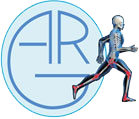Osteoporosis
Osteoporosis is a disease characterized by bone loss and diminished bone strength resulting in an increase in the risk of fractures. Many factors determine who will develop osteoporosis. The more factors present, the greater your chances are of having or developing the disease. As you review the list of risk factors below, remember that early detection and treatment greatly minimize the effects of osteoporosis. It is a preventable, treatable disease.

- Gender: Women are four times more likely than men to get the disease, with Caucasian and Asian women most at risk.
- Age: Women over the age of 45 and those who have experienced menopause are at greatest risk.
- Calcium Deficiency: A low dietary intake of calcium can cause weakened bone strength.
- Sedentary Life: Physical activity increases bone mass, a sedentary lifestyle results in lower bone density.
- Body Size: Petite women are more at risk than heavier women because fat cells are sites for estrogen production.
- Family History: A familial history of osteoporosis increases risk.
- Cigarette and Alcohol Use: Cigarettes reduce effective estrogen levels, increasing the bone loss. Alcohol in excess of 2 drinks daily my impair calcium metabolism.
- Medications: Long-term use of corticosteroids, anti-seizure drugs, excess thyroid hormone, aromatase inhibitors, anti gonadotropin drugs, and antidepressants may accelerate bone loss and worsen osteoporosis.

